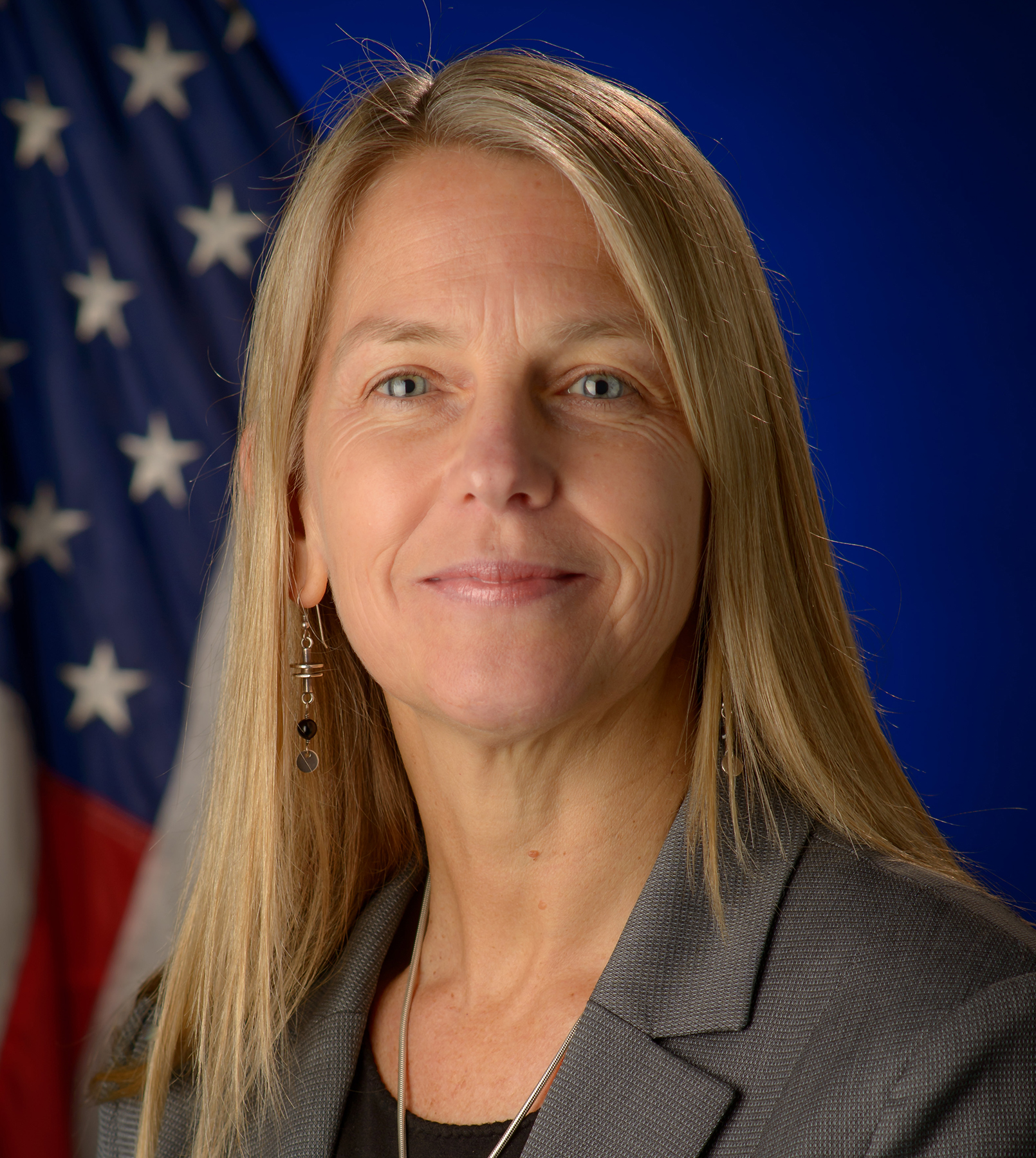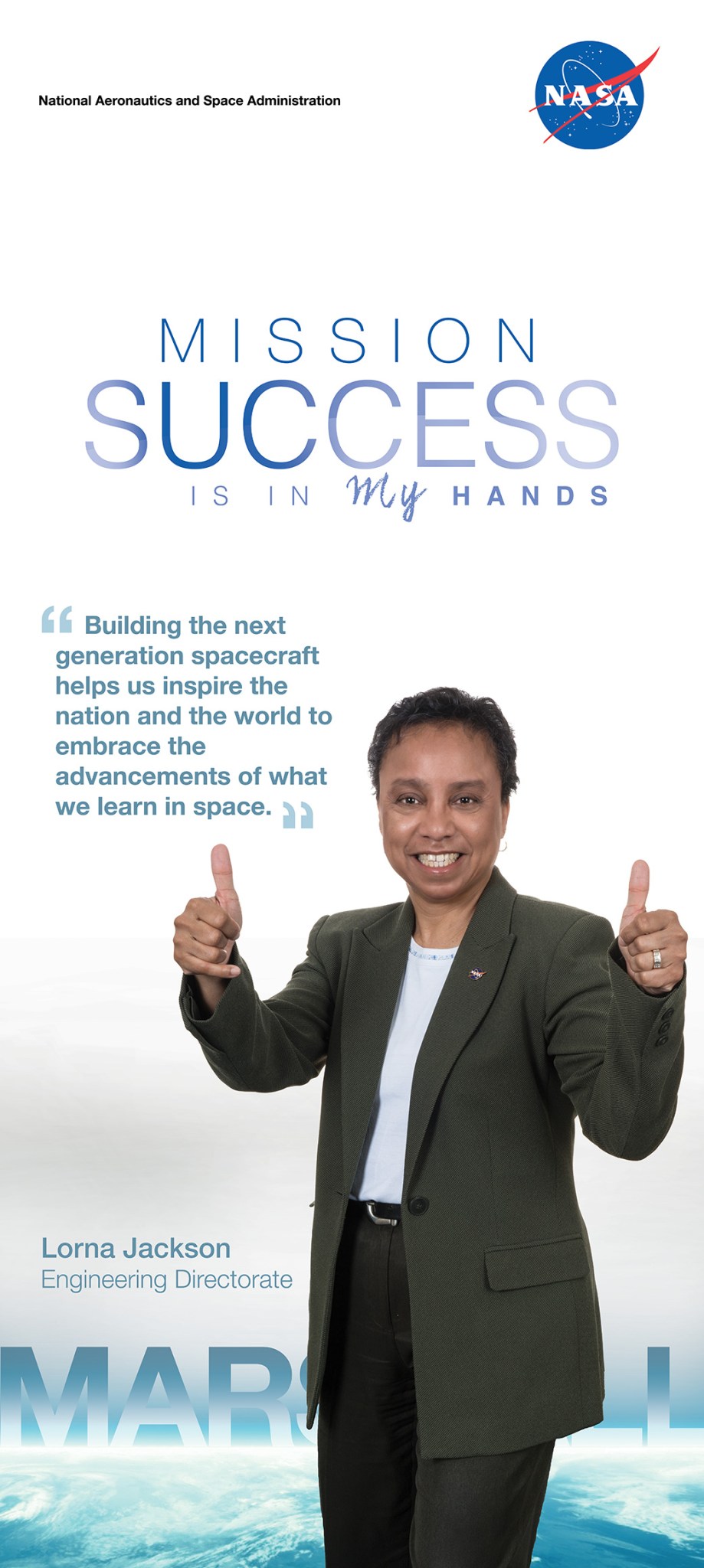In This Week’s Star
- NASA Deputy Administrator Dr. Dava Newman to Visit Marshall Center Aug. 6
- NASA Continues Pushing the Boundaries of Images from Space
- NASA, Auburn University Sign Space Act Agreement on Additive Manufacturing
- Marshall to Host Ustream Event about the Perseid Meteor Shower Aug. 12; Experts to Answer Questions
- Mission Success Is in Our Hands: Q&A with Lorna Jackson, Avionics Systems Integration Branch Chief
- This Week in NASA History: Space Shuttle Discovery, STS-85, Launches From Kennedy — Aug. 7, 1997
- Obituaries
NASA Deputy Administrator Dr. Dava Newman to Visit Marshall Center Aug. 6
NASA Deputy Administrator Dr. Dava Newman will make her first visit to the Marshall Space Flight Center on Aug. 6. She will tour multiple facilities and address the Marshall workforce during an all-hands meeting in Morris Auditorium at 9 a.m.
At 1 p.m., Newman will provide the keynote address at a Women’s Mentoring Event hosted by Marshall Deputy Director Teresa Vanhooser in Building 4316, followed by casual round-table mentoring sessions.
Sworn in as deputy administrator in May 2015, Newman assists the administrator in providing overall leadership, planning and policy direction for NASA. Prior to her tenure with NASA, she was the Apollo Program Professor of Astronautics at the Massachusetts Institute of Technology in Cambridge. Her expertise is in multidisciplinary research that encompasses aerospace biomedical engineering.
For more information about Newman, click here to read her NASA biography.
Or click here to check out her latest blog post.
NASA Continues Pushing the Boundaries of Images from Space
By Bill Hubscher
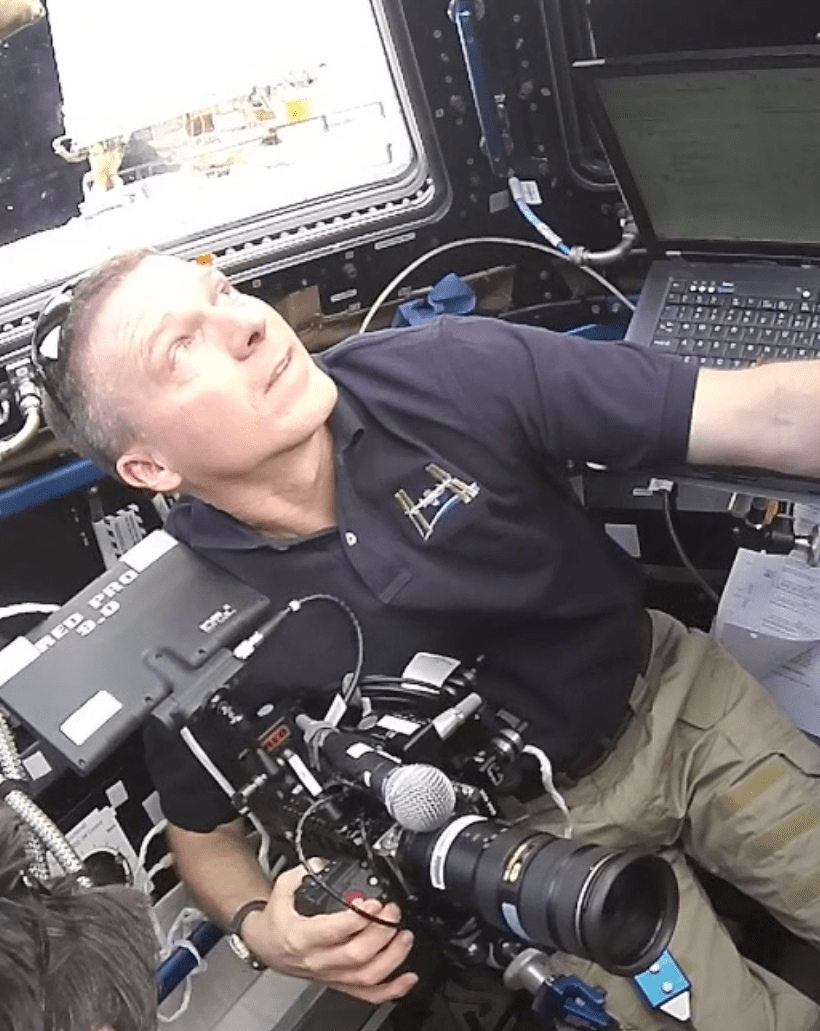
In October 2014 NASA delivered high-definition, 3-D footage of astronauts living and working on the International Space Station to the Internet, posting video of astronauts exploring water tension in microgravity. The video soon went viral, racking up more than two million views. The same engineers who sent high-definition cameras and then 3-D cameras to the space station have now delivered a new camera capable of recording images with six times more detail than either of the previous cameras.
The Epic Dragon camera by RED, a digital cinema company, is capable of shooting at resolutions ranging from conventional HDTV up to 6K, specifically 6144 x 3160 pixels. By comparison, the average HD consumer television displays up to 1920 x 1080 pixels of resolution, and digital cinemas typically project 2,000 to 4,000.
The fifth SpaceX cargo resupply mission delivered this camera to the orbiting laboratory in January 2015. The camera’s ability to record at a high resolution as well as up to 300 frames per second made it the ideal recording device to capture dynamic events like vehicle operations near the station, such as docking and undocking. The higher resolution images and higher frame rate videos can reveal more information when used on science investigations, giving researchers a valuable new tool aboard the space station and new video for NASA to share with people who want to learn more about the world’s orbiting research outpost.
The ReelNASA YouTube channel posted views of Earth and activities recorded from inside the station as an example of the detailed images this new camera can capture. The most recent RED camera footage shows astronauts having a little fun in the microgravity environment of space, while they also tested out the new camera that is ideal for science.
In the video, astronaut Terry Virts extracts a floating ball of water, into which he inserts an effervescent tablet to watch it dissolve and release gasses in mid-air. Rodney Grubbs, program manager for NASA’s Imagery Experts Program at the Marshall Space Flight Center says the footage itself is dynamic for its subject matter, and the detailed, high-resolution makes it especially riveting.
“This is a huge leap in camera technology for spaceflight,” Grubbs said. “These cameras have large sensors capable of very high-resolution imaging at high frame rates. It is like having a high-speed, 35MM motion picture film camera, but it is compact, can use lenses we already have up there, and it is digital. No film to return to Earth.”
The RED camera is the same model used to record theatrical releases such as “The Hobbit” trilogy and television programs. Ultra-HD televisions capable of receiving and displaying 4K transmissions are now sold in stores.
While the 4K resolutions are optimal for showing on movie screens, NASA video editors are working on space station footage for public viewing on YouTube. You will be able to watch high-resolution footage from inside and outside the orbiting laboratory right on your computer screen. You will need a screen capable of displaying 4K resolution for the full effect, but the imagery still trumps that of standard cameras. RED videos and pictures are shot at a higher fidelity and then down-converted, meaning much more information is captured in the images, which results in higher-quality playback, even if you don’t have a 4K screen.
NASA will post the 4K videos to the ReelNASA YouTube channel for users who have television screens or computer displays that can show footage of that resolution. They plan to post new videos every few weeks, bringing the spectacular views into your living room. Perhaps they may not be as good as the view from orbit, but pretty close.
Hubscher, an ASRC Federal/Analytical Services employee, supports the Office of Strategic Analysis & Communications.
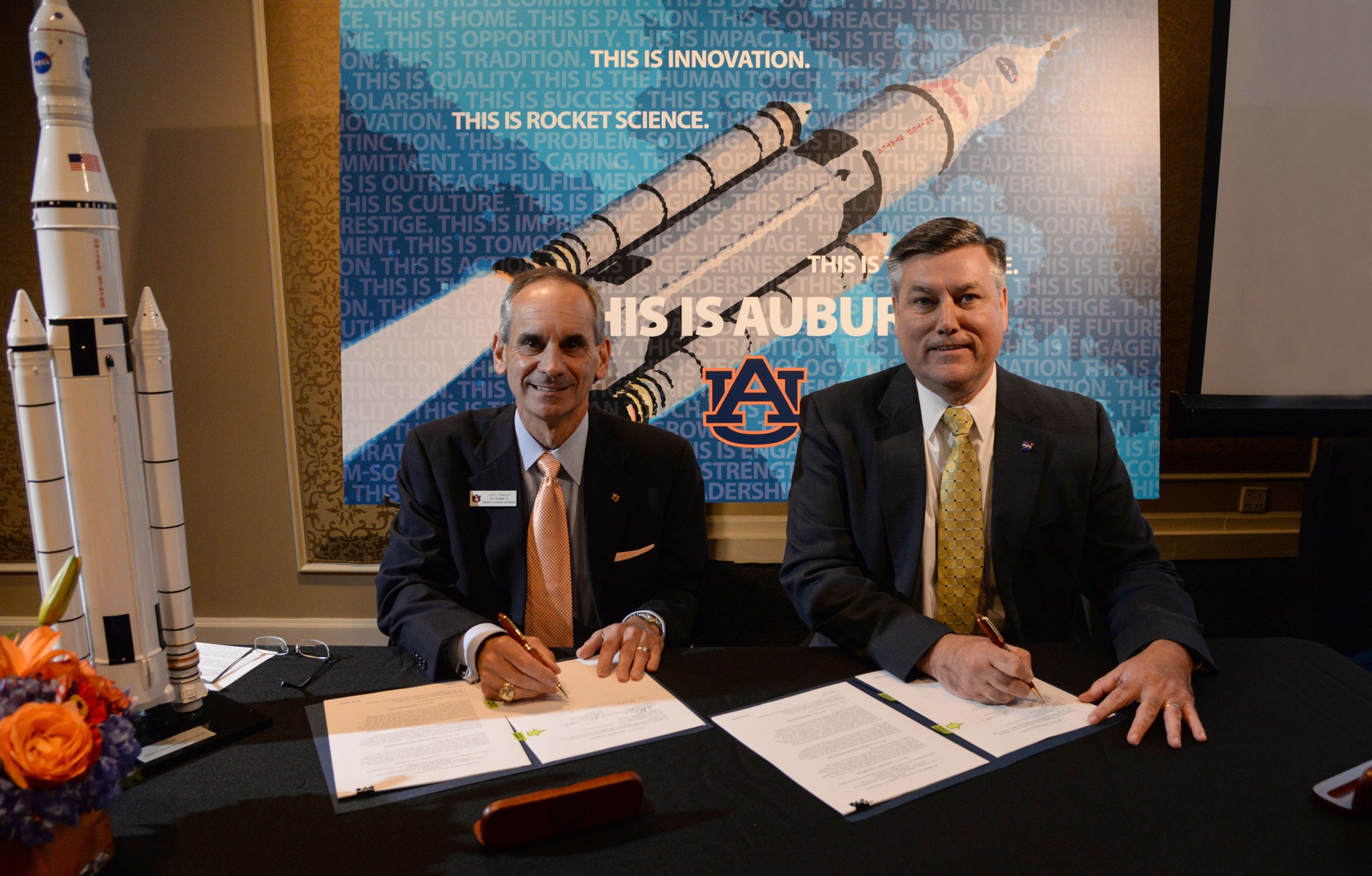
NASA, Auburn University Sign Space Act Agreement on Additive Manufacturing
By Kenneth Kesner
Officials from Auburn University and NASA’s Marshall Space Flight Center signed a Space Act Agreement on July 30 to explore and advance the applications of additive manufacturing, or 3-D printing.
The signing took place at Auburn, Alabama, during the university’s forum on additive manufacturing, a process that uses 3-D printing to make a three-dimensional part or instrument, providing substantial technological advances and cost savings over traditional manufacturing methods.
“As we continue developing the agency’s powerful new rocket, the Space Launch System, for deep-space missions to an asteroid and a journey to Mars, additive manufacturing techniques are making it possible to create and test innovative new designs quickly and affordably,” said Marshall Director Patrick Scheuermann. “Marshall is also pioneering the use of 3-D printers in space, and the recycling and sustainability of advanced manufacturing materials needed to enable long-term missions. We’re pleased to partner with industry and academia as we focus on technologies that not only are central to the nation’s space mission, but also benefit aerospace and other activities on Earth.”
Marshall has used additive manufacturing to build and test rocket engine components and manufacture the first 3-D printed parts aboard the International Space Station. These parts are currently undergoing testing at Marshall.
“Additive manufacturing is a major advancement for the future direction for the nation’s industries,” said John Mason, Auburn vice president for research and economic development. “The partnership with NASA is an excellent opportunity to engage and leverage each other’s capabilities and expertise.”
The Space Act Agreement, in addition to focusing on additive manufacturing, is designed to advance STEM disciplines – science, technology, engineering and mathematics – by engaging students and teachers in NASA’s missions and opportunities; investigate and develop technologies; and share facilities, capabilities and technical expertise.
Auburn’s forum, “Additive Manufacturing, the Next Industrial Revolution,” brought together leaders from the private sector, academia and government to explore opportunities and challenges of using this advanced technology in manufacturing. Greg Morris, general manager of additive technologies with GE Aviation in Cincinnati, gave the keynote address. GE Aviation is bringing high-volume additive manufacturing to its facility in the city of Auburn to manufacture jet engine fuel nozzles.
“We are establishing partnerships with highly innovative businesses and organizations to spur economic growth throughout the state and region,” Mason said. “These relationships benefit our students with learning experiences, while companies benefit from the practical, applied solutions developed through research conducted by faculty and students.”
Kesner, an ASRC Federal/Analytical Services employee, supports the Office of Strategic Analysis & Communications.
Marshall to Host Ustream Event about the Perseid Meteor Shower Aug. 12; Experts to Answer Questions
By Christopher Blair
One of the biggest meteor showers of the year — the Perseid Meteor shower — begins next week and NASA’s Marshall Space Flight Center wants to share it with everyone.
On Aug. 12, Marshall will host a live Ustream broadcast, highlighting the science behind the Perseids, as well as NASA research related to meteors, comets and asteroids. The broadcast will air from 9 p.m. Aug. 12, to 1 a.m. Aug. 13, on the Marshall’s Ustream channel.
Special guests on the broadcast will include NASA meteor experts Dr. Bill Cooke, Danielle Moser and Rhiannon Blaauw, all of NASA’s Meteoroid Environment Office, located at Marshall. They will provide on-air commentary, as well as answer questions online, using Marshall social media accounts.
The guests have extensive and diverse sky-watching expertise. Cooke, the office lead, specializes in studying the meteoroid environment and its effects on space vehicles of all sorts. Moser’s works include modeling meteor showers, analyzing lunar meteoroid impact data and managing the cameras for the NASA All Sky Fireball Network. Blaauw has analyzed automated meteor fluxes from optical detectors, managed wide-field meteor cameras and comet monitoring.
Also scheduled to join the broadcast, via telephone, are experts from NASA’s Goddard Space Flight Center, the American Meteor Society, the SETI Institute and others.
There are two methods to join the online conversation during the broadcast. NASA fans can tweet questions to @NASA_Marshall using the hashtag #askNASA. Fans may also post questions to the Marshall Facebook account replying to the 9 p.m. Perseid “Q&A” post.
For more information on the Meteoroid Environment Office, click here.
For the latest in Watch the Sky news, click here.
Blair, an ASRC Federal/Analytical Services employee, supports the Office of Strategic Analysis & Communications.
Mission Success Is in Our Hands: Q&A with Lorna Jackson, Avionics Systems Integration Branch Chief
Lorna Jackson, Avionics Systems Integration Branch chief at NASA’s Marshall Space Flight Center recently sat down with Marshall Public Affairs Officer Molly Porter to discuss “Mission Success Is in Our Hands,” an initiative underway at Marshall to strengthen team members’ commitment to mission assurance and flight safety.
Years at Marshall: 29 years
What are the key responsibilities of your job? The Avionics Systems Integration Branch is responsible for integrating electronic systems used on various launch vehicles and space systems. As branch chief, I lead a diverse team of technical lead experts and contractors to ensure that spacecraft electronic systems and subsystems work together as a coordinated whole.
How does your work support the safety and success of NASA and Marshall missions? I am building NASA’s Space Launch System — the next-generation, heavy-lift spaceflight vehicle that will allow our astronauts to explore safely beyond Earth’s orbit. Working on the SLS enables NASA to meet mission goals in its continued endeavors to deliver quality and safe science investigations, exploration initiatives and human spaceflight. Building the next-generation spacecraft helps us inspire the nation and the world to embrace the advancements of what we learn in space. This is truly exciting!
What does “Mission Success Is In Our Hands” mean to you? It’s our responsibility as engineers — including NASA team members and our partners around the world — to ensure that every project we work on serves NASA’s vision as a whole, while gaining knowledge. That knowledge gain translates to great innovations in medicine and technologies that have positive impacts on our day-to-day lives.
Do you have a story or personal experience to share that can help others understand the significance of mission assurance and flight safety? What did you learn from it? I was lead power systems engineer for several state-of-the-art test beds for both the Chandra X-Ray Observatory and Hubble Space Telescope programs. I played a key role in developing a ground-based spacecraft data monitoring and analysis system. This included assessing and ensuring the safety and reliability of electrical power subsystems. These test beds have proven invaluable to the Hubble and Chandra programs through their ability to accurately simulate electronic performance — primarily the solar arrays and batteries — as these vehicles orbit earth. Success is evident by both exceeding their initial five-year mission durations. Hubble is celebrating its 25th anniversary and Chandra is celebrating its “sweet 16” this year.
I could not have accomplished such success in these programs without collaboration. I learned to work with groups of great people and came to appreciate the importance of teamwork. This is something that I have carried with me throughout my career — I know that I could not accomplish anything without the support and cooperation of those I work with — and for that, I am grateful.
How can we work together better to achieve mission success? By always fostering an atmosphere of collaboration and teamwork on all NASA projects while keeping in mind the mission and goals of the agency.
Do you have anything else you’d like to share?
My career at NASA, especially at the Marshall Space Flight Center, has truly been one exciting ride that I will cherish forever! It was all good!
This Week in NASA History: Space Shuttle Discovery, STS-85, Launches From Kennedy — Aug. 7, 1997
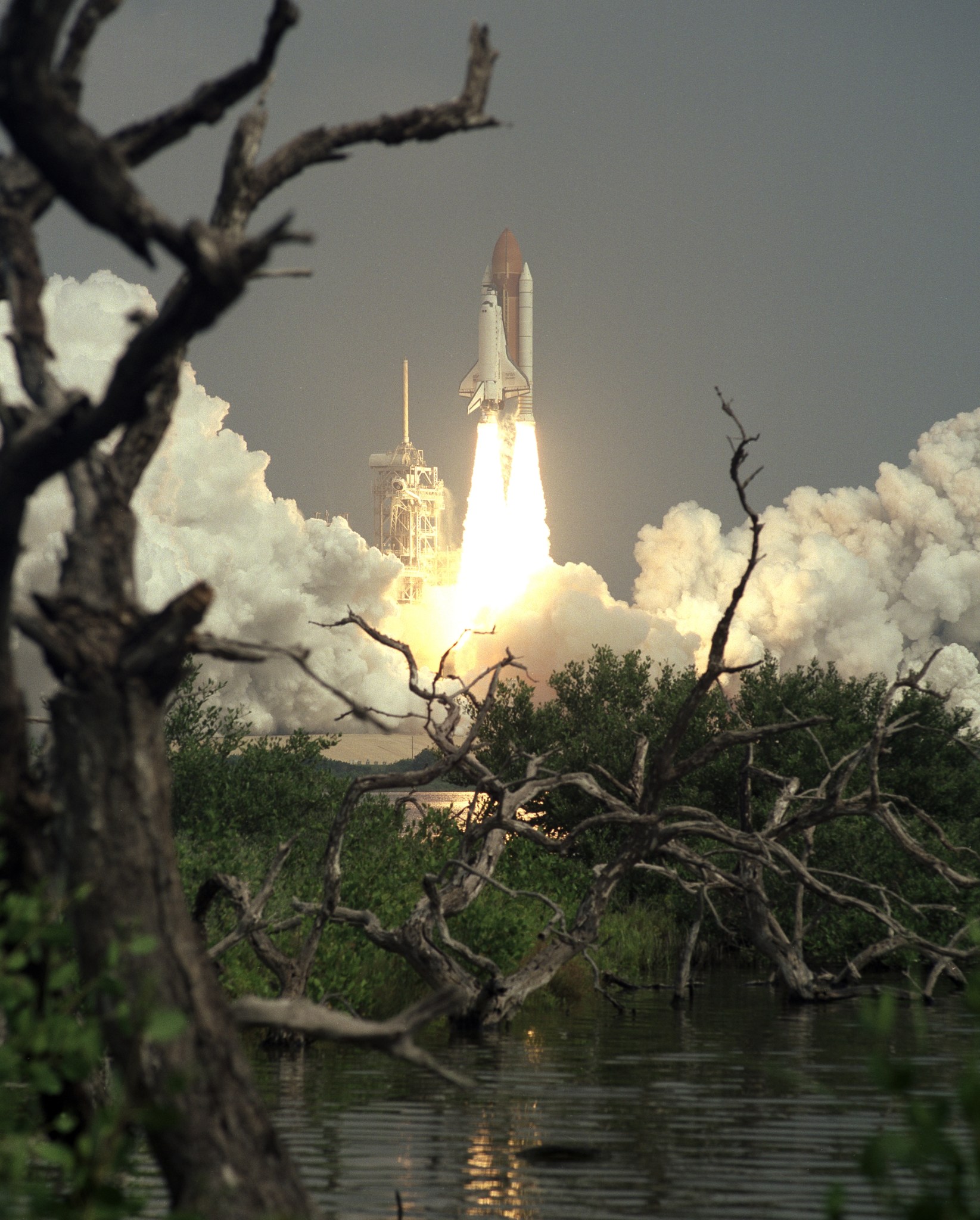
Obituaries
Gail Martin, 57, of Huntsville, died July 4. She began working at Marshall in 1980 as a management support specialist, where she was still employed at the time of her death. She is survived by her husband, Glen Martin.
Billy J. Duncan, 85, of Fayetteville, Tennessee, died July 26. He retired from the Marshall Center in 1988 as an aerospace engineer. He is survived by his wife, Myrtle Haskins Duncan.
Charles B. Winkler, 79, of Madison, Alabama, died July 27. He retired from the Marshall Center in 2005 as a program specialist.



























